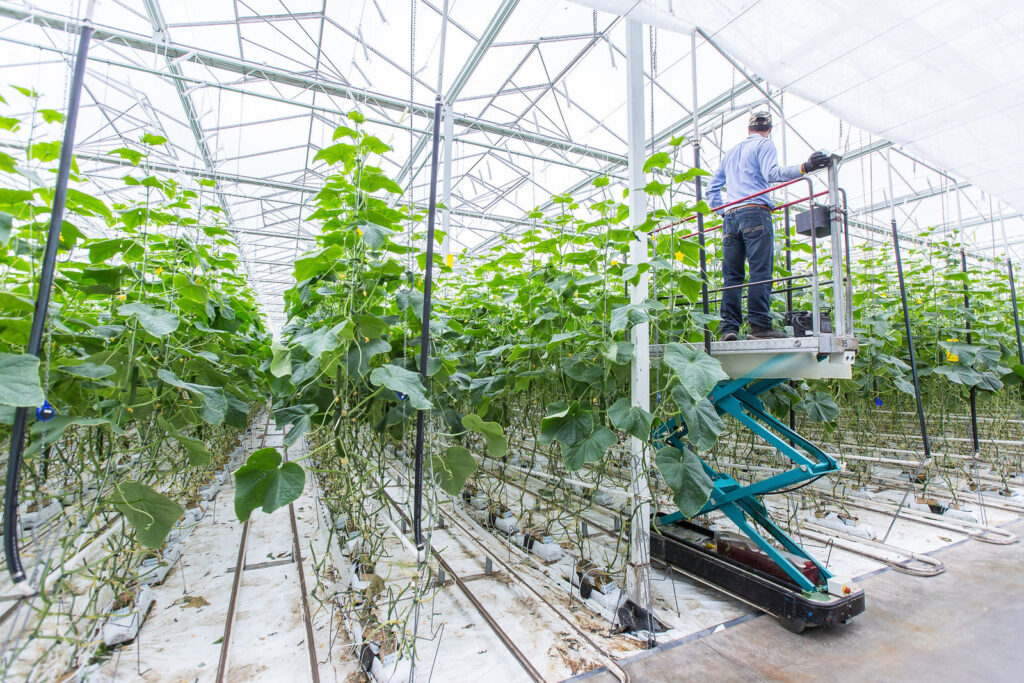
Features
Are growers ready for the low-carbon transition?
According to the IPCC, over a quarter of global greenhouse gas emissions can be tied to the food that we eat.
January 5, 2023 By Heather McDiarmid
 Rising carbon and energy prices are an added strain for conventional greenhouse operations with potentially serious consequences.
Rising carbon and energy prices are an added strain for conventional greenhouse operations with potentially serious consequences. Greenhouse operations are a growing industry in Canada according to Statistics Canada. They can provide healthy and tasty food close to home, creating jobs, reducing distances travelled, and increasing resilience toward the disruptions to food supply chains that climate change is making all too common. But in a world where carbon emission reductions are a growing priority, greenhouse operations in Canada may face challenges in the years to come.
Canada and most advanced economies have committed to achieving net zero emissions by 2050. Reaching this goal is essential because the devastating droughts, floods, storms and wildfires experienced just in the last few years are nothing compared to what we and future generations will experience if we do not. This means that every sector of our society will see growing pressure to transition to low-carbon operations.
According to the IPCC, over a quarter of global greenhouse gas emissions can be tied to the food that we eat. Reducing emissions from this sector will be more challenging in many ways than reducing emissions from transportation and buildings because it can’t be achieved just by replacing fossil fuels with systems that run on clean electricity. And as we make progress in other areas, the spotlight is shifting toward our food systems.
Many people are already choosing to eat more plant-based foods to reduce their personal carbon footprints. Food carbon calculators and apps are now available to help consumers make lower carbon choices, and some of these consider how food is grown.
Institutions are also examining the food that they buy. For example, the University of British Columbia has introduced climate-friendly food labels and the University of Waterloo has inventoried the emissions associated with its food purchases.
Businesses, including food and beverage companies, are under increasing pressure to report on and reduce their supply chain emissions as a climate risk management strategy .
The upshot is that the emissions associated with food grown in greenhouses will be getting increased scrutiny as individuals, institutions and businesses seek ways to reduce their food-related emissions. The carbon implications of local greenhouse-grown produce over imports or alternatives will be carefully examined.
Greenhouse growing is a carbon-intensive business. With their transparent walls and roofs, it should come as no surprise that greenhouses are energy inefficient buildings, requiring large quantities of heat to sustain the growing conditions favoured by many greenhouse-grown foods. Currently, greenhouses are typically heated with fossil fuels. Fertilizers and other inputs also have large carbon footprints. Lower carbon alternatives exist (heat from biomass, heat pumps, ground air heat transfer systems), but shifting to these alternatives will likely mean changes to how and what is grown in the greenhouse.
Rising carbon and energy prices are an added strain for conventional greenhouse operations with potentially serious consequences. Bloomberg recently reported that 8% of Dutch greenhouse operations are expected to declare bankruptcy in the coming year because of rising energy prices.
The math on carbon emissions doesn’t look good for conventional greenhouses. One kilogram of Ontario greenhouse tomatoes is responsible for 3.2 kg of greenhouse gas emissions, but those same tomatoes grown in a Mexican field and trucked to Canada is responsible for approximately 0.3 kg of emissions .
The transition to a low carbon society has started. Canadian greenhouse operations had better take note.
Heather McDiarmid is a climate mitigation consultant and founder of McDiarmid Climate Consulting. She specializes in decarbonisation solutions for the buildings sector. When not working, she enjoys growing food in her own tiny hoophouse and spending time outdoors.
Print this page